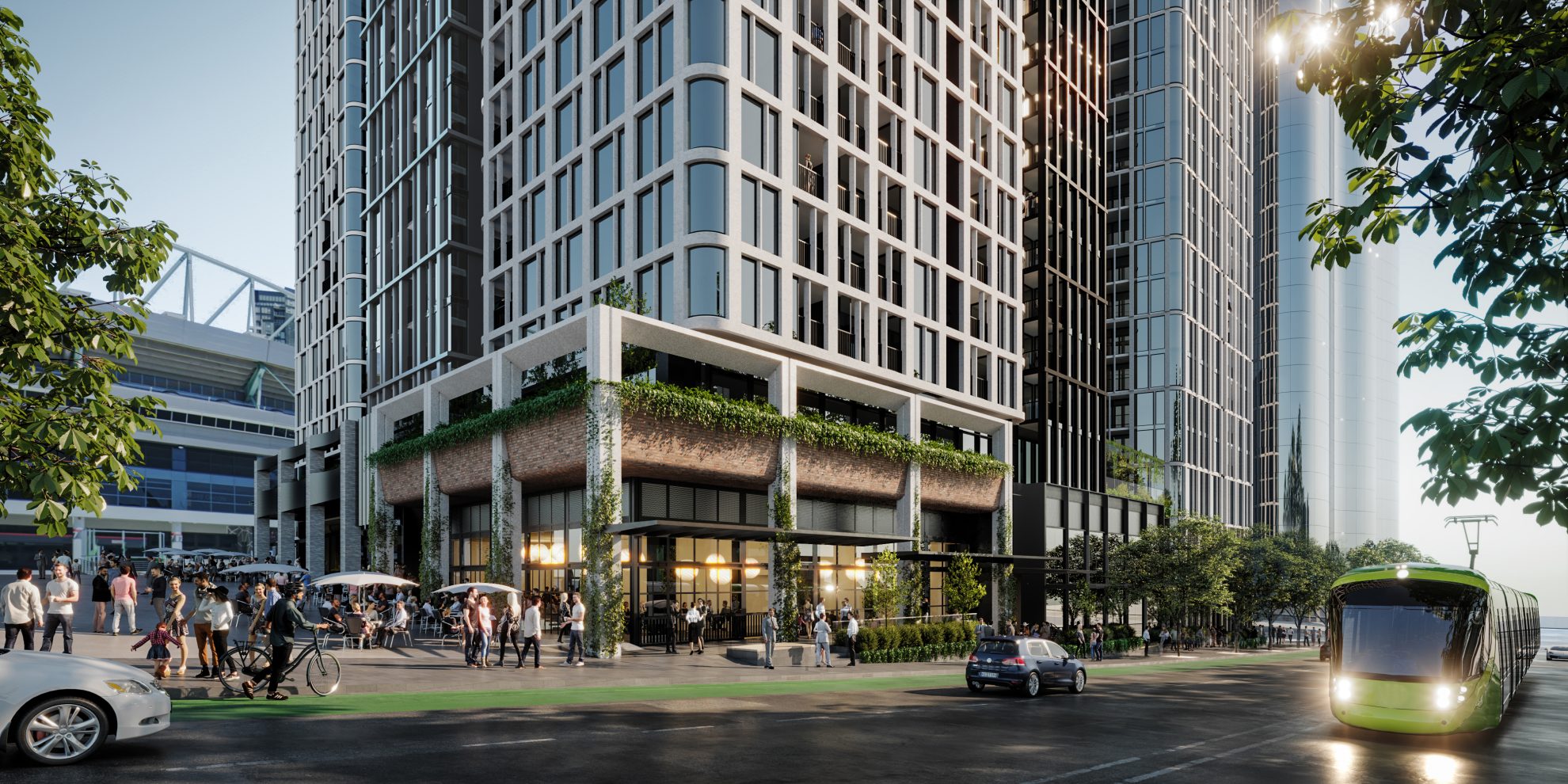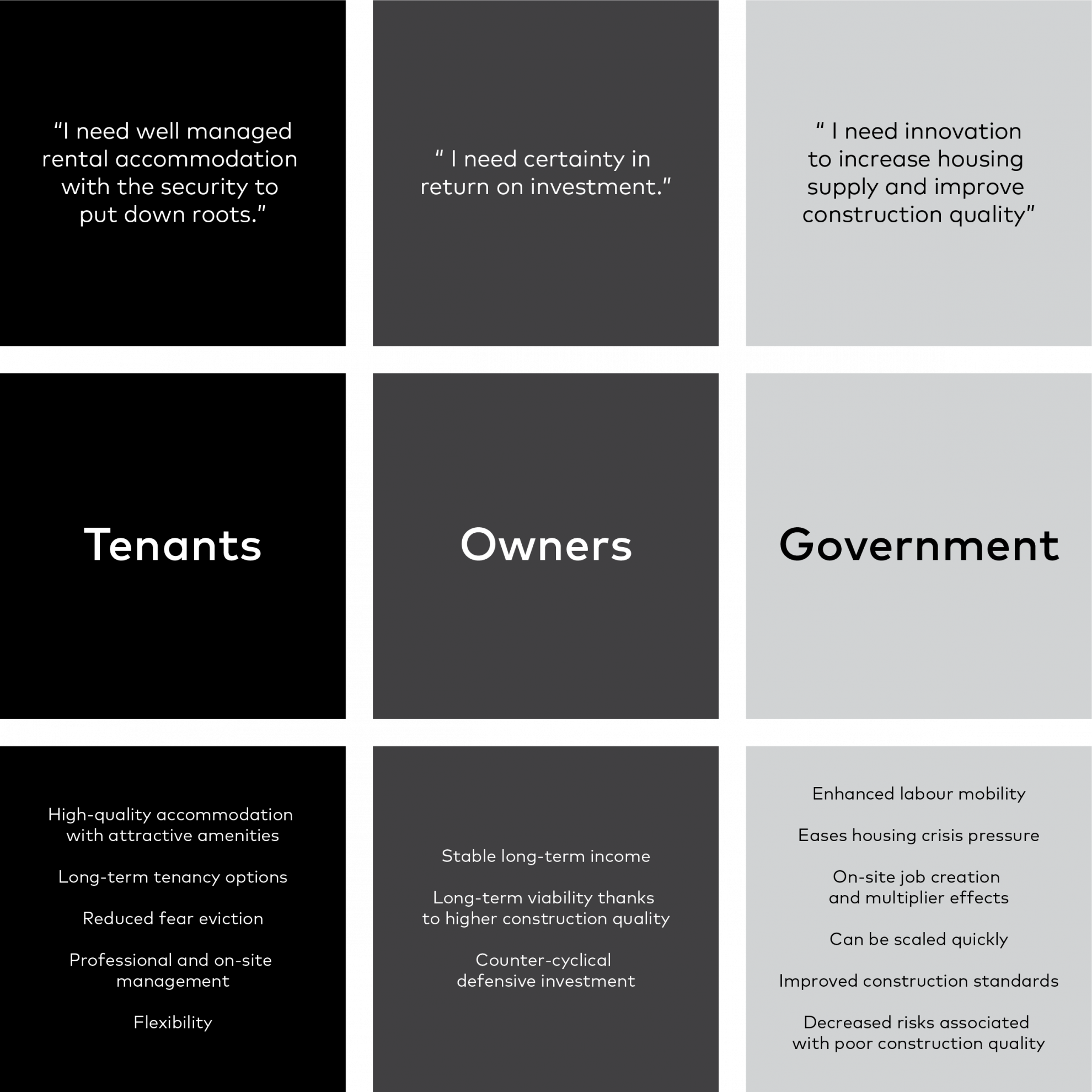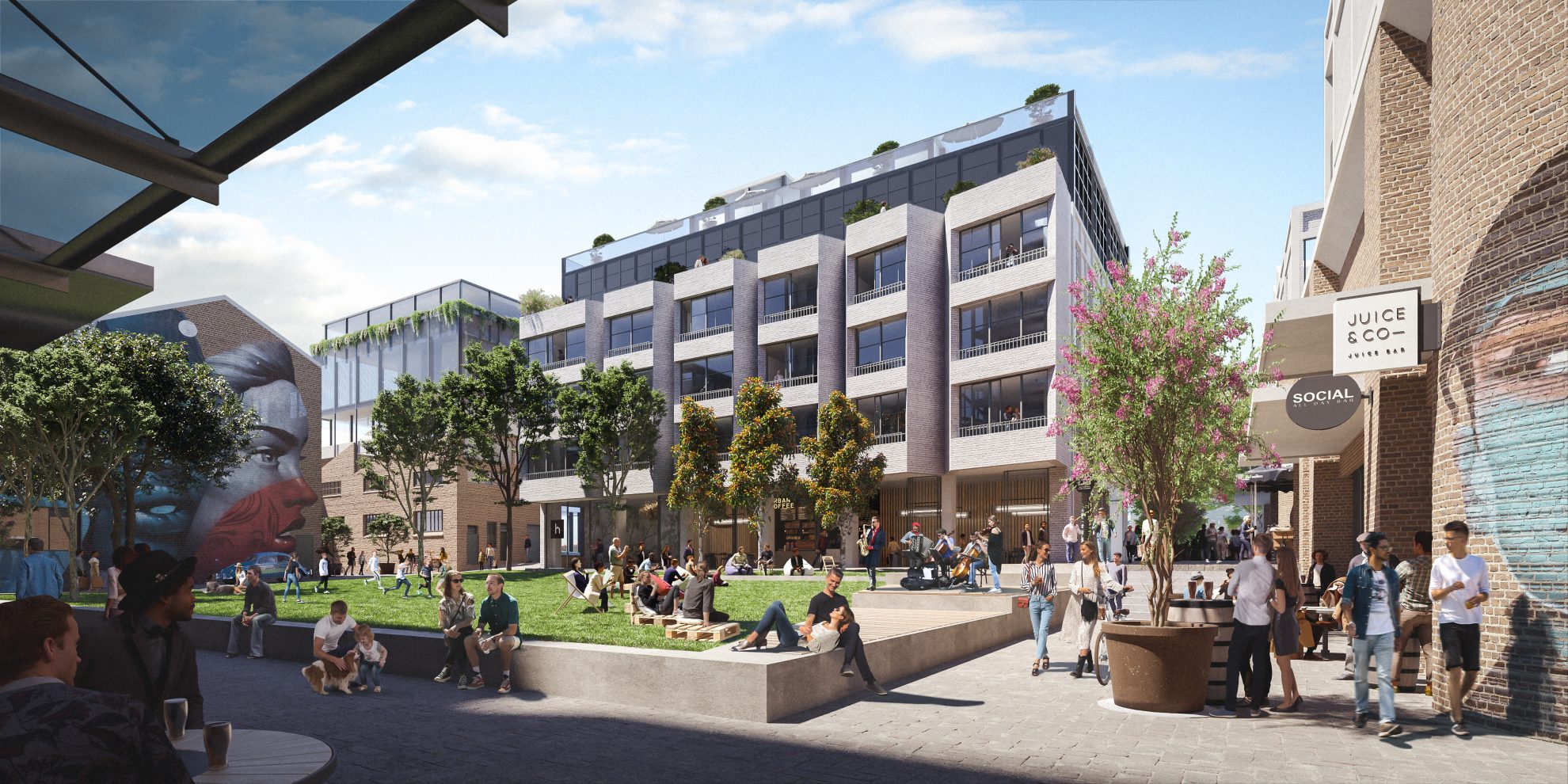A Stable Future for Australian Renters – How Build to Rent is Reshaping the Housing Market

Owning your own home has often been at the centre of the ‘Australian dream.’ But, over the past decade, the number of renter households in Australia has grown by 500,000, increasing the proportion of renters from 27% to 31% (2019)[1]. The cost of housing has moved this tide, along with shifting demographics. There has also been an increase of single-person households, resulting in redistributed incomes per household. In response, longer term renting periods and more rental properties are needed.[2]
“A lifestyle, not a landlord”
The Build to Rent model is flexible enough to accommodate the entire housing market. From key workers seeking housing closer to their workplaces – right through to inner-city professionals wanting a premium experience. Simply put, Build to Rent has the potential to help anyone looking for long-term, stable, quality housing with professional management.
Built to Rent (BtR) housing is purpose-built accommodation owned by a single company under professional management. Never up for sale, these units are solely to be rented, with tenancy agreements set for long periods of time. This model has roots in the US and UK, fast becoming a trend in Australia.
What sets Build-to-Rent apart?
With little maintenance required, lowered liability, and the freedom of flexibility, BtR developments are an attractive prospect to many. BtR housing understands occupants’ desires for longer tenancies, resulting in an increased stake in the community. Designed to be flexible, and adapted to suit the desires of the building’s occupants, many incorporate desirable community spaces, such as gyms, communal lounges, or a cinema room. Low running costs and resilient materials are vital to the viability of the BtR model. Centralised services can be tuned more efficiently and are ideal for sustainability and minimising energy use.
Community is at the heart of BtR – with the design of these developments encouraging interaction, both between those residing in the buildings and the wider public. BtR sees occupants more like ‘homeowners,’ while simultaneously benefiting the precinct owner – with longer-term residents, steady incomes, and less vacancies.

Built-to-Rent in action
Although a newer concept in Australia, BTR projects are popping up across the nation. In Sydney, construction has recently started on Precinct 75 – a vibrant creative precinct comprising 12-character builds set over nearly 1.5 hectares in St Peters. Across the border in Melbourne, everything is on track at 685 La Trobe Docklands for a late 2024 completion, with the project to eventually bring two towers of 30 and 28 storeys adjacent to Melbourne’s Marvel Stadium.

Precinct 75, ‘St Peters’, Sydney
Purchased in early 2024, the site is now owned by privately owned development company, Coronation Property who specialise in delivering innovative mixed-use urban renewal precincts, comprising build-to-sell (BTS), build-to-rent (BTR), retail, commercial, hotel, and public-use assets. Together with a team of well-regard consultants, COX are working with Coronation to enhance and reimagine the precinct. With over 80 suites ranging from 50sqm through to 740sqm, ‘Precinct 75’ offers flexibility and convenience for individuals and businesses to work and grow.
The design proposes a collection of new and retained buildings, connected by a considered and welcoming public realm. Conceptually, the site can be viewed as two halves – residential and commercial – stitched together by an activated ground plane.
The structure of the masterplan aims to create a precinct that delivers a high-level of amenity, legibility, and permeability. Makers Way and the precinct laneways open the site to the surrounding neighbourhood – east to Edith Street, west to Mary Street and south to Roberts Street.
Communal spaces are inspired by hotels – the amenity and service offering formulated to make residents’ lives easier and more enjoyable. Amenity isn’t there to tick boxes, everything has been designed based on research into what residents want. Precinct 75 is all about how a building’s offering can build a sense of community and create a more connected life.
A diverse range of public spaces, green spaces and parks are located throughout the precinct to encourage outdoor connectivity all within the proximity of the retail offerings, residences, and workplaces.
Ramin Jahromi, COX Director
The vision for Precinct 75 builds on its rich provenance as a destination for local retailers, hidden gems, originality, authenticity and curated moments. The birthplace of an Australian icon, Taubmans Paint, its unique heritage is imbued with innovation and ingenuity – an ideal place for the creation of a new way of innovative living in Australia. A place for people to put down their roots, Precinct 75 will preserve what is precious, while also sensitively layering in new amenity and creating a home for current and future communities,

685 LaTrobe, ‘HOME Docklands’, Melbourne
The ‘HOME Docklands’ project at 685 La Trobe in Melbourne includes the provision of 676 build-to-rent apartments across two towers, along with 3,382 square metres of retail and associated uses within a three-level podium.
Located on the south side of La Trobe Street, the two towers will front between Wurundjeri Way to the east, Harbour Esplanade to the west and the concourse of Docklands Stadium to the south.
The design is conceived to create an innovative mixed-use and residential building that provides La Trobe Street with a landmark build that adopts innovation in sustainability, design excellence, and optimises the living environment. The design proposal takes into consideration the site orientation and aims to invigorate the vacant site with active street frontages, creating a city-shaping public realm and laneway destination.
The podium level will also include a large function space, which could potentially be used by the Australian Football League (AFL).
COX’s design seeks to emphasise the breakup of two towers and the podium, with diverse façade materials and articulation breaking up the building mass to create a ‘building of buildings.’
Phil Rowe, COX Director
Be it the Bowery or Balmain, Brunswick or Battersea, engineering the kind of vibrant and diverse communities these types of exemplars represent has been the goal…but one only previously obtainable by years of organic development, contextual stimulus and a whole lot of luck. The BTR phenomenon now allows us to identify, unlock and accelerate the incubation of these nascent ‘villages’ through a considered alchemy of economics, whole-of-community design and content curation to create an offer that is both obtainable and ‘magnetic’ to a right kind of community
[1] (source: Rethinking the Kiwi dream: How New Zealanders live now’ (21st April 2019).
[2] (source: Rethinking the Kiwi dream: How New Zealanders live now’ (21st April 2019).